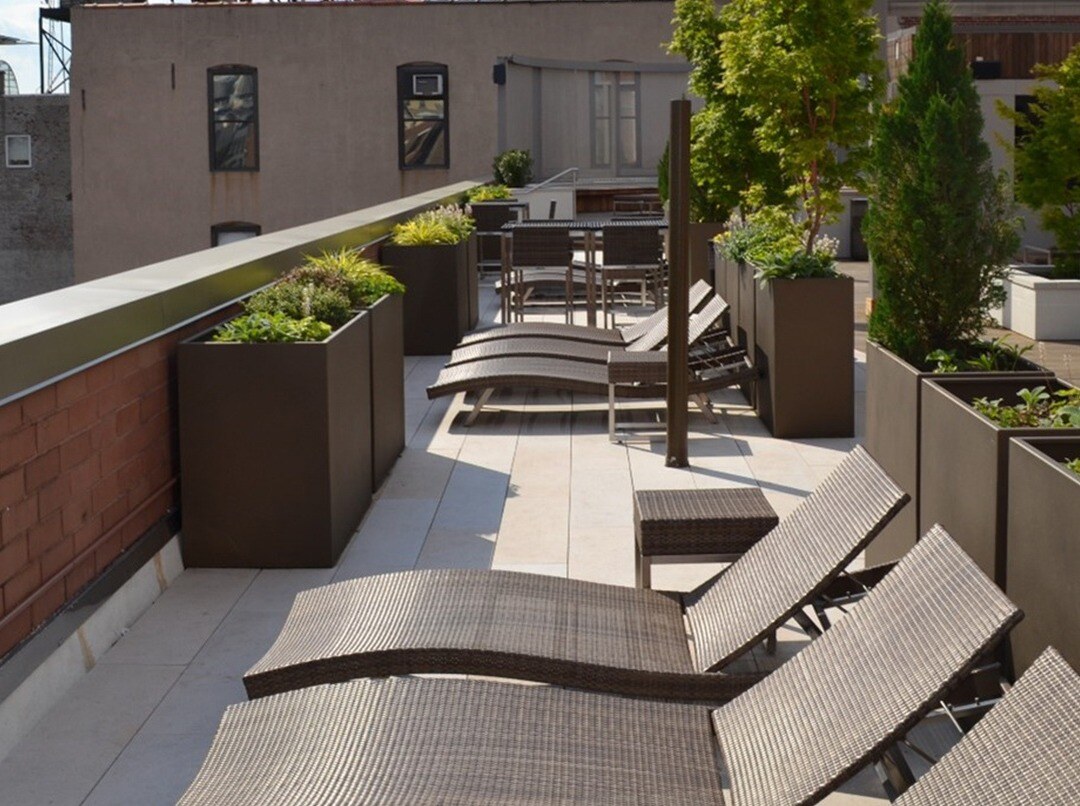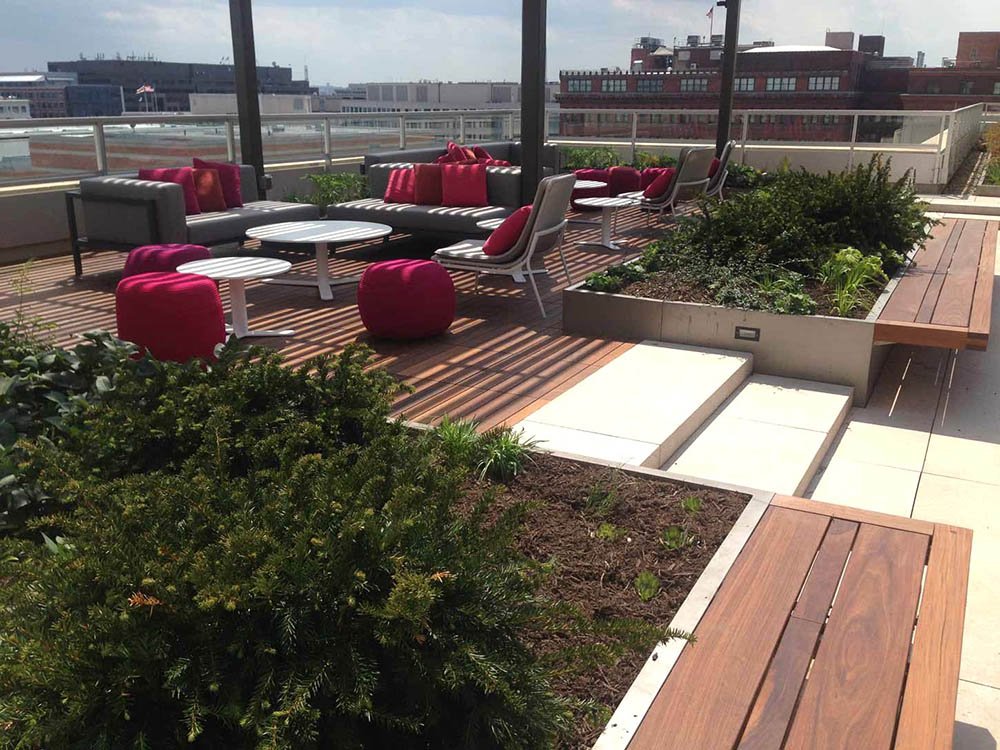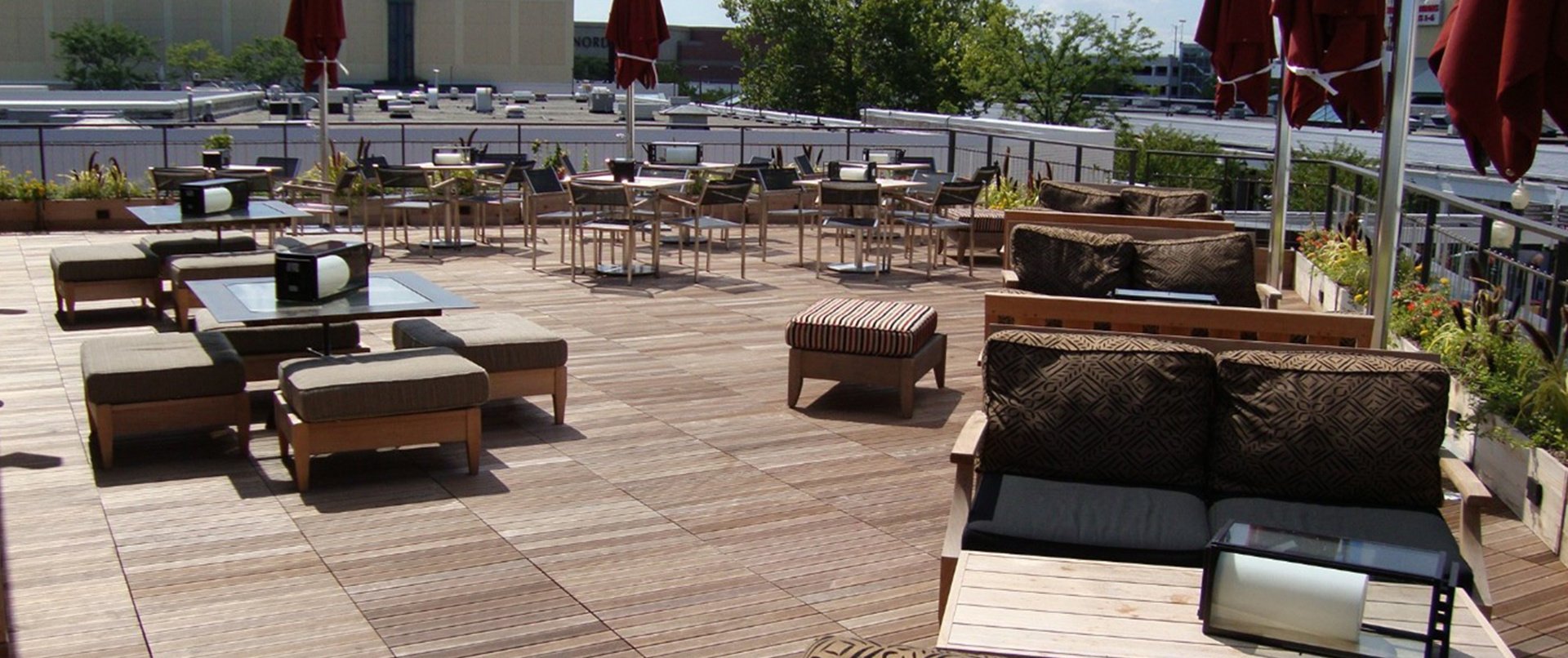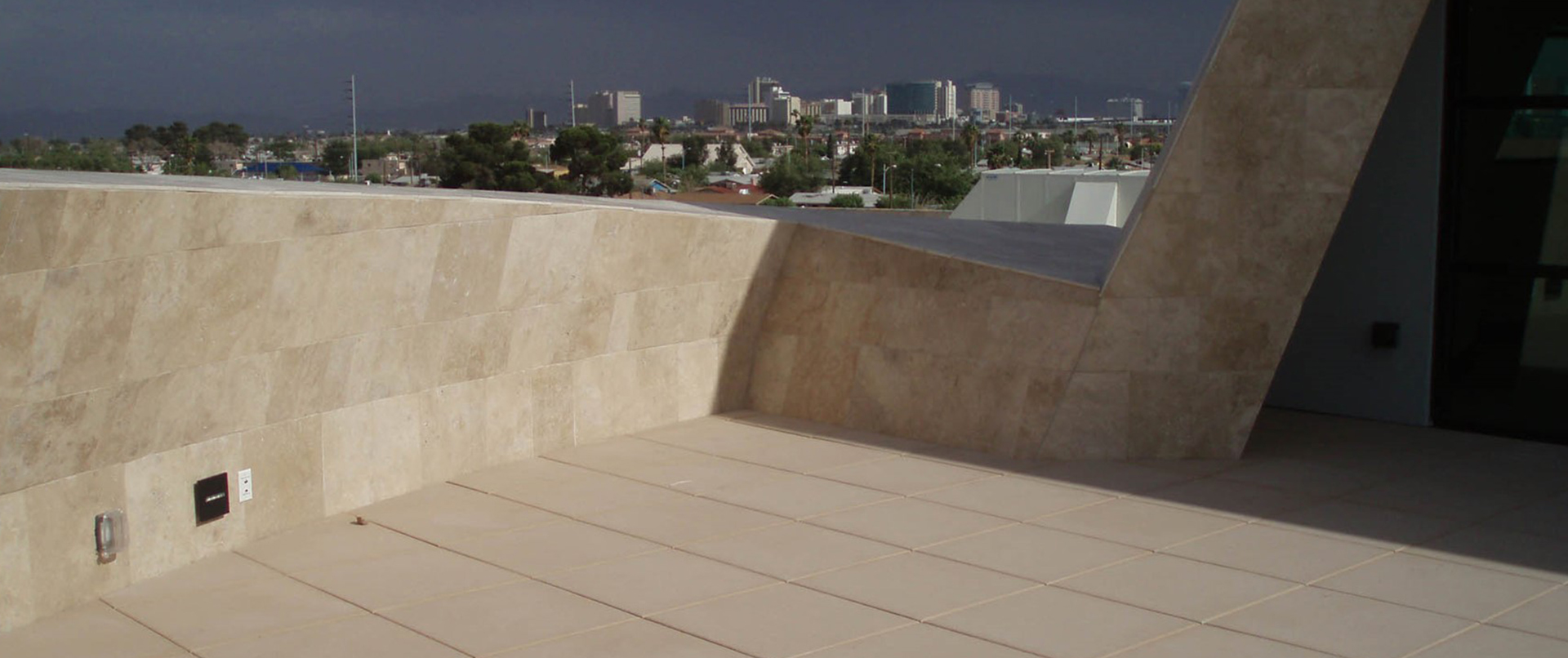To understand what plants can be grown on a green roof, it’s necessary to know what type of building it will be placed on, the climate, and the level of maintenance that the owner is prepared to undertake.
So, what types of green roofs are there and what types of plants work as part of green roof designs?
What is a green roof?
A green roof, as its name suggests, uses green material - that is, plant material - in lieu of or on top of conventional roofing materials. Green roofs are becoming more and more popular as environmentally sound alternatives to traditional roofs (particularly in areas that require solutions to recurring heat waves and/or stormwater damage).
Green roofs have structural advantages over traditional roofs - they absorb rather than reflect heat, which is especially important in urban and industrial areas, and they can slow the movement of rainwater, averting or reducing flood damage.
Green roofs also reduce air and noise pollution and are a beautiful choice aesthetically. There are three main types of green roofs, depending on the area they cover and the level of maintenance they need:
- Extensive green roofs: This type of green roof will cover a large area and, for this reason, is populated with plant species that are as close to maintenance-free as possible. Plants are selected that can thrive in harsh conditions including large temperature fluctuations and intense heat. Typically, the plants used in extensive roofs have shallow roots and fast spreading habits, as they need to cover wide areas.
- Semi-intensive green roofs: Semi-intensive green roofs combine low-maintenance, spreading plants used in extensive green roofs and plants that have higher maintenance requirements and deeper, more developed root systems. Semi-intensive green roofs will require a deeper medium for planting.
- Intensive green roofs: Intensive green roofs have no restrictions on plant species that can be grown on them. Essentially, an intensive green roof can look the same as an urban rooftop garden or recreational green space. Intensive green roofs have structural weight requirements: the building below must be able to carry the substantial weight of the deep planting medium required for this type of planting. Typically used in urban settings, intensive green roofs are increasingly adopted by restaurant businesses keen on harnessing the potential of growing their own produce. Intensive green roofs may use site furnishings such as planters to enhance the design.
What types of plants are used in green roofs?
The full range of plants used in intensive green roof landscaping are is impossible to list, as they can range from decorative floral plant species to vegetables and fruit trees. However, there are plants that are suitable for all green roof designs and are used in extensive green roof designs. They possess the qualities that make them well-suited to the harsh conditions of a green roof, notably drought tolerance. This reduces the need for irrigation systems to maintain them.
So, what types of plants are used in green roofs? The following are the most commonly used types:
- Succulents: Succulents are the most popular type of plants used in green roofs, with good reason. Succulents are very drought tolerant, so they require little to no irrigation. Thanks to their shallow roots, they also don’t require a deep planting medium. Sedum spurium is one of the very best plants for a green roof. Sedum spurium, or creeping sedum, has a sprawling growth habit and dense, low-growing nature that makes it a popular choice for extensive green roofs. It is deciduous and will die back during winter. Depending on the type, this sedum produces pink, red, or white flowers in the summer. Other types of succulents typically grown on green roofs include many varieties of stonecrop succulents, for example, sedum sieboldii. Sempeverium, or hen and chicks, is often chosen for its attractive tufted leaves that form rosettes.
- Herbaceous perennials: Many herbaceous perennials are native species of the Mediterranean region, which means they are drought tolerant and suitable for growing in harsh conditions under the hot sun. Two plant species of thyme are commonly used in green roof landscaping: common thyme (thymus vulgaris) and Thymus serpyllum “Minimus.” Both species are drought tolerant groundcover plants that produce small pink flowers during the summer. Oregano has similar characteristics to thyme and makes a great companion for it. It flowers with pink, purple, or white flowers that are highly scented and attractive to bees.
- Grasses: Many ornamental grasses are highly valuable plants for a green roof. Native species of drought-prone areas such as prairies and deserts, grasses require very little watering. Festuca glauca, or blue fescue, is very commonly used in green roof design thanks to its attractive blue-green color and compact clumping growing habit. Deschampsia flexuosa, commonly known as wavy hair grass, is another frequently used species of ornamental grass, noted for its hair-like tufts and purple or silver flowerheads. Originating in dry grasslands, it is almost maintenance-free.
- Flowering species: A green roof can accommodate flowers, but it’s always necessary to bear in mind that flowers require a deeper planting medium than succulents or grasses. Lower-growing, drought-tolerant perennials are always the more sensible choice, as they will require less irrigation and can cope with green roof conditions. Wildflower mixes can do very well on green roofs and commonly include plants such as yarrow, sea thrift, maiden pink, and birdsfoot trefoil. Birdsfoot trefoil and yarrow are particularly pollen-rich and valuable to bees. The bright-colored yellow, red, and white flowers of these species have an aesthetic value for green roofs, too.
How do you take care of plants on green roofs?
Now that you know what types of plants are used in green roofs, it’s worth mentioning a few basic care tips. Green roof care is especially important while the plants are being established, although intensive green roofs will need ongoing care just like any other garden. A few basic rules, regardless of the type of green roof you have, are:
- Irrigation: Even extensive green roofs planted exclusively with drought-tolerant sedum will need some watering in very dry areas. This can be set up as an automated system.
- Weeding: Removal of unwanted plant species will need to be undertaken every year to prevent the green roof from being colonized by undesirable invasive species.
- Drainage system maintenance: The green roof’s drainage system must be checked for debris at least twice a year. This is less crucial in dry areas, but areas prone to storms must have the drainage serviced regularly.
- Fertilizers: Semi-intensive and intensive green roofs will need the application of a slow-release fertilizer once or twice a year. Remember: these plants are growing in a shallow planting medium, so they will exhaust the nutrition in the soil fast.
Installing a green roof for your business
Green roofs are quickly becoming a popular option for business infrastructure. They help save energy, protect buildings from the adverse effects of harsh climates, and create a more relaxing and inviting work environment. If you’d like to learn more about creating green roofs, let’s talk. At Bison IP, we provide materials, systems, and continued education for rooftop deck environments, and we’d love to help you bring your green rooftop deck to life.
.png?width=100&height=100&name=BisonIP-logo-PMS425-2023%20(1).png)



